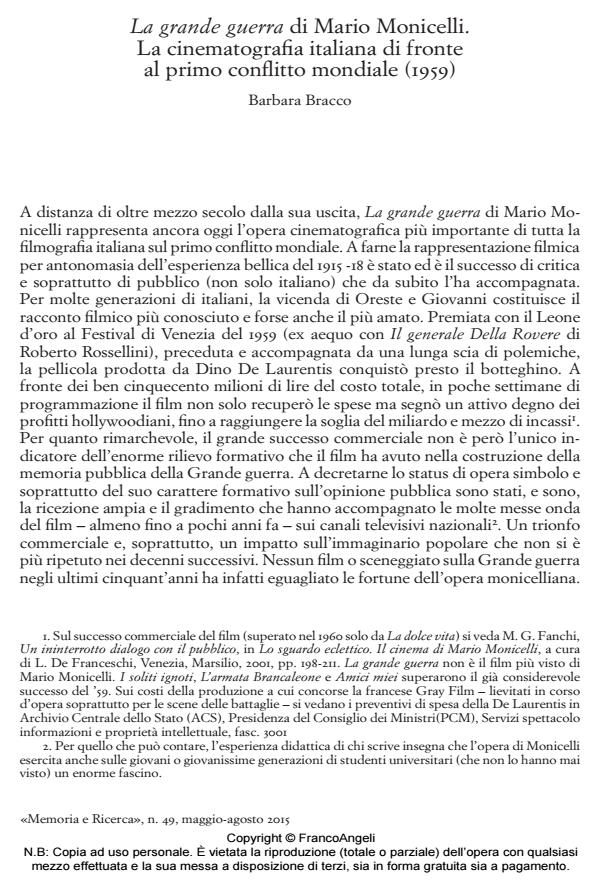La grande guerra by Mario Monicelli. The Italian Cinema Facing WWI (1959)
Journal title MEMORIA E RICERCA
Author/s Barbara Bracco
Publishing Year 2015 Issue 2015/49
Language Italian Pages 16 P. 71-86 File size 182 KB
DOI 10.3280/MER2015-049006
DOI is like a bar code for intellectual property: to have more infomation
click here
Below, you can see the article first page
If you want to buy this article in PDF format, you can do it, following the instructions to buy download credits

FrancoAngeli is member of Publishers International Linking Association, Inc (PILA), a not-for-profit association which run the CrossRef service enabling links to and from online scholarly content.
Mario Monicelli’s La grande guerra is the most well known (and probably most beloved) Italian film on World War One. Released in 1959, and awarded with the Best Film prize at the Venice Film Festival (along with Roberto Rossellini’s Il generale Della Rovere), La grande guerra has greatly contributed in changing the traditional Italian canon of the war epic, both in the movies and in other cultural domains, a canon that dated back to the fascist era. Relying on a vast corpus of war memoirs, and on a huge international film tradition, the director and his screenwriters created the first realistic representation of the experience of the Italian soldiers in the trenches. Monicelli’s choice of mixing tragedy and comedy, in order to tell the story of two "yellow heroes", was object of debate, not just among film critics, but more generally in the public sphere. In the context of the Italian economic boom of the sixties, with its deep cultural and political transformations, this debate marked a watershed in the collective memory of the wars fought by the Italians during the first part of the Twentieth century.
Keywords: Mario Monicelli; Italian war experience; tragedy; comedy; economic boom.
Barbara Bracco, La grande guerra di Mario Monicelli. La cinematografia italiana di fronte al primo conflitto mondiale (1959) in "MEMORIA E RICERCA " 49/2015, pp 71-86, DOI: 10.3280/MER2015-049006